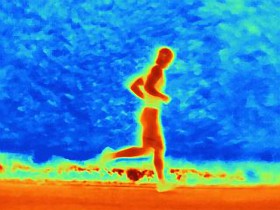 Platelet rich plasma (PRP) is a plasma component that is enriched with platelets. Within the past 15 years, PRP use has increased to treat patients with tendon, cartilage, ligament or muscle injury, since platelets have granules which contain cytokines and growth factors and may aid in wound healing.
Platelet rich plasma (PRP) is a plasma component that is enriched with platelets. Within the past 15 years, PRP use has increased to treat patients with tendon, cartilage, ligament or muscle injury, since platelets have granules which contain cytokines and growth factors and may aid in wound healing.
Evidence, however, from randomized trials is lacking that PRP actually speeds injury recovery. A recent double-blind, placebo-controlled trial published in the New England Journal of Medicine tested the efficacy of PRP injections versus saline in 80 patients with acute hamstring muscle injuries. There were no substantial differences between the trial arms. Both groups had similar median times (42 days) until they could resume their sport activities. Re-injury rates were also similar in both groups (16% in the PRP group and 14% in the placebo group), and no serious adverse events occurred throughout the six month trial. Further exploration of the efficacy of PRP treatment in sports-related injuries is warranted.
